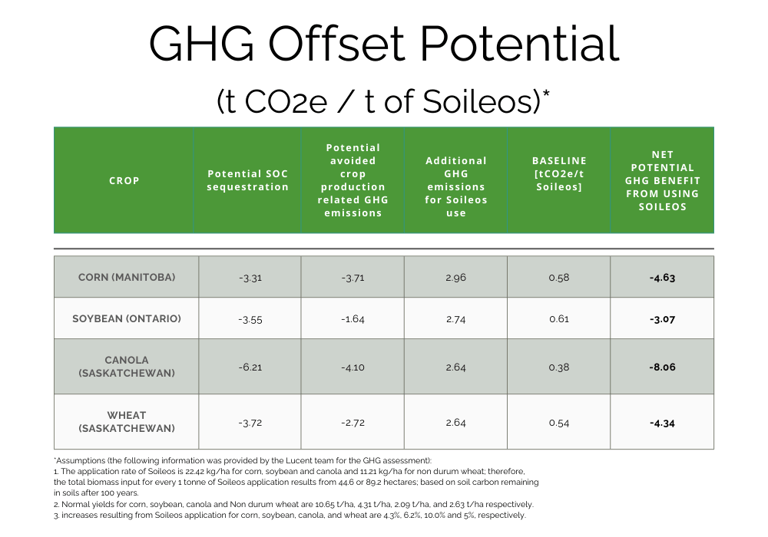As we approach Earth Day, a time for reflection and action on environmental sustainability, Lucent BioSciences is proud to announce an update to our environmental footprint whitepaper. In collaboration with Viresco Solutions, we've dug into the environmental benefits of manufacturing and using Soileos Zinc and Soileos Iron, assessing their carbon emissions and other environmental impacts. The highlight of this update is the inclusion of wheat cultivation alongside our existing crops in our analysis. As part of our ongoing commitment to building a sustainable agri-food system, we're thrilled to share the insights gleaned from this expansion.
Wheat, fundamental to global food security, joins our environmental analysis. By incorporating wheat cultivation into our assessment, we're broadening the scope of our research and gaining deeper insights into the environmental impact of Soileos.
Viresco Solutions' data has unearthed valuable insights into the environmental benefits of Soileos on wheat cultivation. Across various scenarios, including corn, soybeans, canola, and now wheat cultivation, Soileos demonstrates a remarkable potential for reducing greenhouse gas emissions. For instance, in wheat cultivation in Saskatchewan, Soileos shows a net potential GHG benefit of 4.34 tCO2e/t soileos used, highlighting its role in mitigating carbon emissions.

Imagine a grower in Saskatchewan who uses conventional fertilizers for wheat cultivation. These fertilizers not only contribute to greenhouse gas emissions during manufacturing but also release additional emissions during their application and breakdown in the soil.
Now, let's say this grower decides to incorporate Soileos into their fertilizer plans. With Soileos, the grower achieves a potential net reduction of 4.34 metric tonnes of carbon dioxide equivalent emissions (tCO2e) for every tonne of product used. This significant reduction in greenhouse gas emissions compared to traditional fertilizers like EDTA-based products highlights the environmental advantages of adopting Soileos.
To put this into perspective, let's consider the emissions from driving a car. The average passenger vehicle emits approximately 4.6 metric tonnes of carbon dioxide per year. So, the GHG benefit from using Soileos for wheat cultivation is equivalent to offsetting the emissions of nearly a year's worth of driving one car.
Why is this important?
Reducing greenhouse gas emissions is critical for combating climate change and its adverse effects on the environment, such as extreme weather events, sea-level rise, and disruptions to ecosystems. Additionally, adopting environmentally sustainable practices like using Soileos can help growers improve their environmental stewardship, sustainability goals, and contribute to a healthier planet for future generations.
With Soileos, we are redefining agricultural practices and championing environmental stewardship. The substantial reduction in greenhouse gas emissions, exemplified by a net potential GHG benefit of 4.34 tCO2e/t in wheat cultivation, is a MASSIVE opportunity for the Ag industry. Soileos is a Climate-positive yield-boosting solution and a tool for enhancing soil health and resilience.
As the fields come alive with the buzz of planting season, there's no better time to embrace a greener approach with Soileos. Seamlessly integrated into the seeding process, Soileos boosts crop yields and supports soil health and resilience through organic carbon sequestration. Let's cultivate a future where every planting season brings bountiful harvests and a flourishing ecosystem.
Join us in growing climate-smart agriculture with Soileos, nurturing a legacy that blossoms for generations to come.
Read the full whitepaper👇

